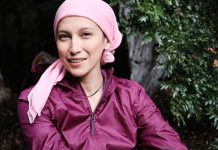
Breast cancer risk estimates for individual women can vary greatly depending on which risk assessment model is used, according to a new study from UCLA.
The study found that women are likely receiving vastly different recommendations depending on the model used and the cutoff applied to define “high-risk.”
This has implications for precision medicine in healthcare, as breast cancer risk models are increasingly used to identify women who could benefit from medicines to reduce the risk of breast cancer as well as supplemental MRI screening.
The study included more than 31,000 women who were part of the Athena Breast Health Network, a statewide quality improvement initiative across the University of California medical and cancer centers.
It focused on three commonly used risk assessment models:
the Breast Cancer Risk Assessment Tool (BCRAT, also called the Gail model), the Breast Cancer Surveillance Consortium (BCSC), and the International Breast Intervention Study (IBIS, also called the Tyrer-Cuzick model).
When using a threshold of ≥ 1.67%, more than 21% of women were classified as high-risk for developing breast cancer in the next 5 years by one model but average risk by another model.
When using a ≥ 3.0% threshold, more than 5% of women had disagreements in risk severity among models.
If all three models were used, almost half of women (46.6%) were classified as high-risk by at least one model.
The researchers say their findings highlight the tradeoff of sensitivity and inaccurate classification of “high-risk” when using the two different thresholds currently recommended.
While using the more conservative ≥ 3.0% cutoff would lead to far fewer women incorrectly classified as high-risk, most of the women with a future breast cancer diagnosis would be missed.
The study has some limitations, but the authors suggest that newer risk models that include information on breast cancer susceptibility genes and genetic susceptibility variants may improve predictability.
Quantitative imaging biomarkers and artificial intelligence algorithms might also supplement or replace current risk assessment tools.
How to prevent breast cancer
While there is no guaranteed way to prevent breast cancer, there are steps you can take to help reduce your risk:
Maintain a healthy weight: Being overweight or obese increases your risk of breast cancer.
Exercise regularly: Regular physical activity, such as walking or running, can help reduce your risk of breast cancer.
Eat a healthy diet: A diet rich in fruits, vegetables, whole grains, and lean proteins can help reduce your risk of breast cancer.
Limit alcohol consumption: Drinking alcohol can increase your risk of breast cancer, so it’s recommended to limit your intake to no more than one drink per day.
Don’t smoke: Smoking has been linked to many types of cancer, including breast cancer.
Breastfeed: Women who breastfeed their children for at least several months may have a lower risk of developing breast cancer.
Get regular check-ups: Regular breast cancer screenings, including mammograms, can help detect cancer early when it’s most treatable.
It’s important to note that while these steps can help reduce your risk of breast cancer, they are not foolproof. It’s still possible to develop breast cancer even if you follow these recommendations.
Therefore, it’s important to talk to your doctor about your individual risk factors and screening recommendations.
If you care about cancer, please read studies about a major cause of deadly breast cancer, and new cancer vaccines could prevent cancer recurrence.
For more information about cancer, please see recent studies about drug combo that may stop spread of cancer, and results showing vitamin D supplements strongly reduces cancer death.
The study was conducted by Jeremy S. Paige et al and published in the Journal of General Internal Medicine.
Copyright © 2023 Knowridge Science Report. All rights reserved.



